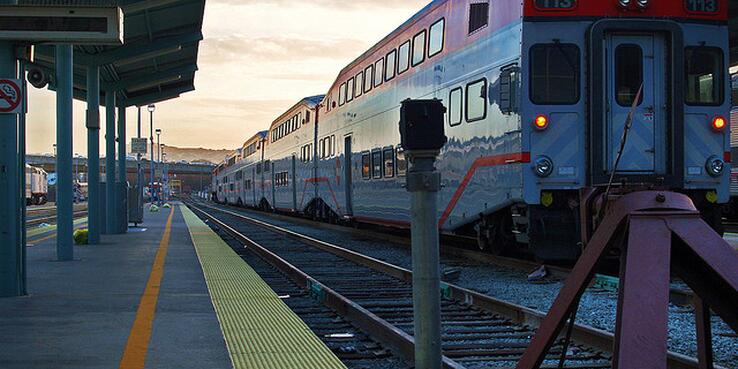After threats to reduce service by nearly half, Caltrain officials last night agreed to scale back their drastic proposed cuts. The rail system’s governing agencies have brokered a deal to avoid the worst-case scenario, which would have run only 48 trains on weekdays, a dramatic drop from the current 86. Through a patchwork of solutions — including a 25-cent fare hike and eliminating some trains and stations — Caltrain will preserve most of its current level of service. In July, Caltrain will reduce the number of trains to 76 on weekdays and close the Hayward Park station in San Mateo, the Capitol station in San Jose and the Bayshore station in Brisbane.
But this short-term solution, which if approved would extend only through fiscal year 2012, doesn’t solve Caltrain’s deeper problem: it’s managed by a coalition of three different counties and lacks a dedicated funding source. Meanwhile, Bay Area commuters have come to depend on it — and they’ve made it one of the most effective transit systems in the region. Ridership has increased 44 percent since 2004, thanks in part to 79 mph Baby Bullet service that delivers passengers from San Francisco to San Jose in under an hour. And Caltrain’s farebox recovery ratio is 47.4 percent — among the highest of Bay Area transit agencies.
A lot is riding (no pun intended) on the outcome of Caltrain’s fate. The Association of Bay Area Governments projects that in 25 years, there will be nearly 700,000 additional jobs and 350,000 additional households in the three counties Caltrain serves. Total employment and population in the areas nearest to Caltrain stations will be in the millions. Additionally, Caltrain is essential to the region’s strategy in complying with SB 375, California’s landmark carbon-reduction mandate. Each five-car train takes approximately 650 automobiles off the road — vehicles that would otherwise be contributing to the congestion and carbon emissions on the already clogged I-280 and U.S. 101 highways.
While Caltrain has avoided the worst in the last week, this solution is only short term. Saving this critical system will require dedicated funding — and probably a new, less-convoluted governance structure. Today SPUR published a discussion paper recommending potential fixes for Caltrain’s long-term future.
• Read SPUR's discussion paper: Saving Caltrain — for the long term
